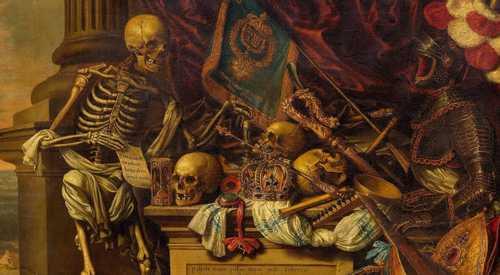You Must Stare This Scary Fact in the Face
Curated from: ryanholiday.net
Ideas, facts & insights covering these topics:
3 ideas
·746 reads
12
Explore the World's Best Ideas
Join today and uncover 100+ curated journeys from 50+ topics. Unlock access to our mobile app with extensive features.
Thinking about the end of our lives
Death is a timeless subject: no matter what is currently happening, death is constantly present in our mind: whether for fear of not losing someone we love or for fear of not dying ourselves.
However, people tend to think more about this topic whenever tragic events happen in their lives or when the worldwide situation gets scarier overall.
31
234 reads
Remember death so you can cherish life
From Moses to Tolstov, our ancestors used to be very much focused on the subject of death.
This is mostly because understanding death means actually understanding life: in order to make the most of our time spent on earth, we must not forget that we will all eventually die.
43
224 reads
Memento mori art
The fact of cherishing the present time and of making the most of what we still have left to live should be the motto of our lives.
The truth is that death does not wait for us to be ready to go, it does not ask and it does not care. So, while you are still here, you might as well enjoy your life as much as you can.
56
288 reads
IDEAS CURATED BY
Gian Dara's ideas are part of this journey:
Learn more about personaldevelopment with this collection
How to synthesize information from multiple books
How to analyze a book
How to set reading goals
Related collections
Similar ideas
7 ideas
How to Accept Mortality: The History of Memento Mori
dailystoic.com
3 ideas
3 Stoic Mantras To Build Your Life On
Daily Stoic
5 ideas
Why death matters
medium.com
Read & Learn
20x Faster
without
deepstash
with
deepstash
with
deepstash
Personalized microlearning
—
100+ Learning Journeys
—
Access to 200,000+ ideas
—
Access to the mobile app
—
Unlimited idea saving
—
—
Unlimited history
—
—
Unlimited listening to ideas
—
—
Downloading & offline access
—
—
Supercharge your mind with one idea per day
Enter your email and spend 1 minute every day to learn something new.
I agree to receive email updates

